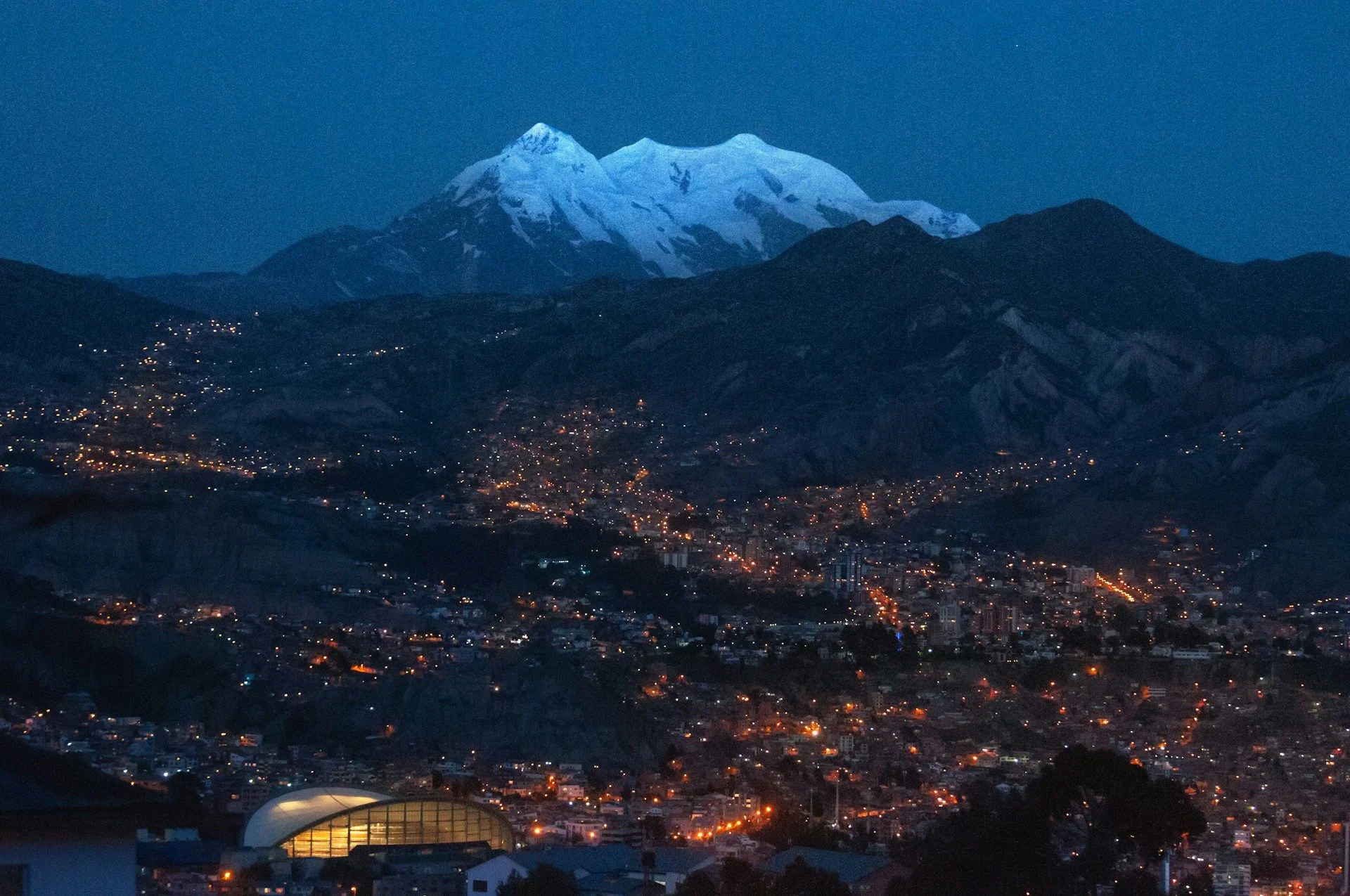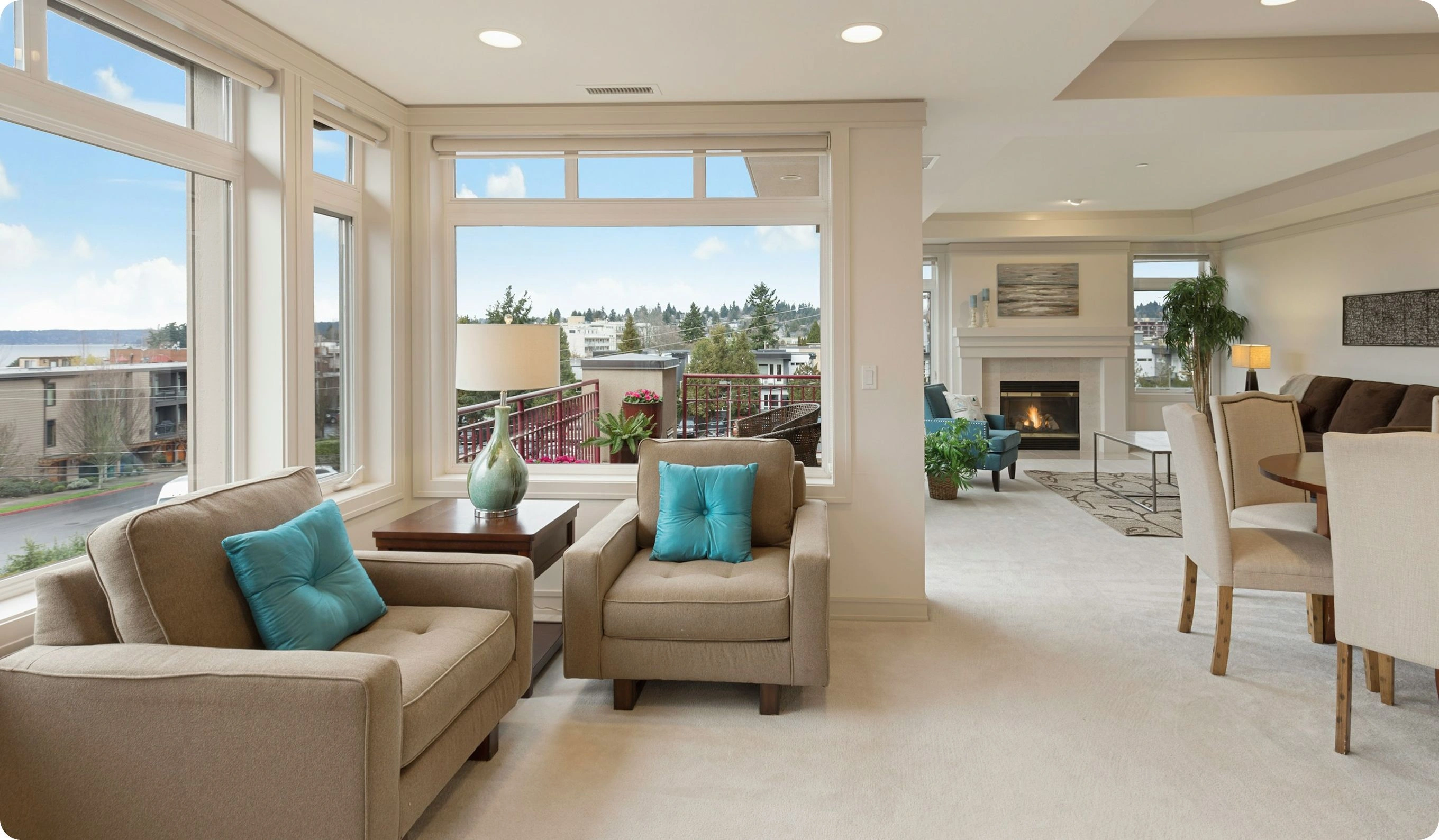Pre-Vetted Homes in Bolivia Secondary MarketTurnkey urban homes withclear investment paths

Popular
cities and regions in Bolivia
Best offers
in Bolivia
Benefits of investment in
Bolivia real estate
Move-In Ready Residences
Secondary properties in La Paz and Santa Cruz de la Sierra often feature full interior refurbishments—modern kitchens, energy-efficient windows, reinforced roofing, and pre-wired smart-home systems—enabling buyers to occupy or lease immediately and eliminate renovation delays.
Mature Urban Infrastructure
Established districts—such as Zona Sur in La Paz, Equipetrol in Santa Cruz, and Cala Cala in Cochabamba—deliver reliable municipal water, stable electricity grids, paved roads, and high-speed broadband, ensuring seamless daily living and tenant satisfaction.
Proven Rental Yields
Bolivia’s secondary market boasts documented rental yields of 5%–7% net in core cities, with consistent demand from expatriates, students, and corporate professionals, providing investors clear exit strategies and predictable cash flows.
Move-In Ready Residences
Secondary properties in La Paz and Santa Cruz de la Sierra often feature full interior refurbishments—modern kitchens, energy-efficient windows, reinforced roofing, and pre-wired smart-home systems—enabling buyers to occupy or lease immediately and eliminate renovation delays.
Mature Urban Infrastructure
Established districts—such as Zona Sur in La Paz, Equipetrol in Santa Cruz, and Cala Cala in Cochabamba—deliver reliable municipal water, stable electricity grids, paved roads, and high-speed broadband, ensuring seamless daily living and tenant satisfaction.
Proven Rental Yields
Bolivia’s secondary market boasts documented rental yields of 5%–7% net in core cities, with consistent demand from expatriates, students, and corporate professionals, providing investors clear exit strategies and predictable cash flows.

Useful articles
and recommendations from experts
Unlock Turnkey Secondary Real Estate Opportunities in Bolivia
Why secondary properties attract buyers
Secondary real estate in Bolivia appeals to discerning buyers and investors seeking immediate usability, infrastructural certainty, and transparent returns. Pre-owned homes and apartments in key cities come with proven utility connections—reliable potable water from Empresa Pública Social de Agua y Saneamiento (EPSAS) in La Paz, stable electricity supplied by the National Electricity Company, and fully operational sewage and drainage networks—eliminating the service activation risks associated with new developments. Many residences retain robust structural shells and characterful façades, whether colonial courtyards in Sucre or modernist elevation lines in Cochabamba, while interiors have been thoughtfully modernized with energy-efficient glazing, contemporary open-plan kitchens fitted with commercial-grade appliances, and reinforced concrete frames designed to meet seismic standards. This combination of heritage character and modern functionality delivers true turnkey readiness, enabling occupants and investors to move in or commence rental operations on day one without additional investment in core systems or finishes.
Transparent historical sales data maintained by municipal property registries—accessible through La Paz’s Catastro Municipal and Santa Cruz’s Dirección de Catastro—provide precise benchmarking against past transactions, empowering buyers with rigorous valuation and risk-assessment tools. Bolivian secondary markets also benefit from mature local service ecosystems: professional property management firms offer tenant placement and maintenance services; homeowners’ associations maintain communal areas and shared systems; and local contractors specialize in rapid, certified upgrades when desired. With average net rental yields of 5%–7% per annum in central districts, and sustained demand from expatriate executives in the hydrocarbons and mining sectors, university students drawn to institutions like Universidad Mayor de San Andrés, and domestic middle-class families seeking turnkey homes, secondary acquisitions across Bolivia’s urban centers deliver a compelling mix of operational convenience, cultural authenticity, and clear investment performance. VelesClub Int.’s end-to-end advisory—from exclusive off-market sourcing and comparative market analyses to negotiation strategy and post-acquisition management—ensures clients capitalize on Bolivia’s evolving property landscape with confidence and efficiency.
Established neighbourhoods
Bolivia’s secondary real estate market is anchored by several mature urban districts, each offering unique lifestyle and investment advantages. In La Paz, the upscale Zona Sur precinct—comprising Achumani, Calacoto, and La Florida—features tree-lined avenues with fully renovated townhouses, low-rise apartment complexes, and gated condominiums. These properties benefit from proximity to international schools (American International School of Bolivia), the United Nations’ Andean headquarters, and rapid-transit bus corridors, along with panoramic views of the Illimani massif. In Santa Cruz de la Sierra, Equipetrol and Urbarí host modern towers converted into secondary apartments with shared gyms, rooftop terraces, and seamless tech infrastructure, appealing to corporate expatriates and hospitality investors. Cochabamba’s Cala Cala and Recoleta districts blend colonial-style mansions and mid-century blocks updated with smart security, diesel-generator backups, and tanked water reserves—critical in seasons of reduced municipal supply. Sucre’s historic center, a UNESCO World Heritage Site, offers heritage buildings repurposed into modern flats near Plaza 25 de Mayo, attracting tourism-driven rental demand. Tarija, Bolivia’s wine region, sees established villas in Barrio Sucre and El Rosario converted into guesthouse units for enotourism, capitalizing on reliable utilities and seasonal yield peaks. Across these locales, essential services—sealed roads, continuous electricity, broadband internet, and robust waste collection—operate reliably, ensuring minimal post-purchase upgrades and immediate integration into mature communities.
Who buys secondary real estate
Buyer profiles in Bolivia’s secondary real estate segment are remarkably diverse, reflecting the country’s multifaceted economy and demographics. Local upper-middle-class families often acquire turnkey three- and four-bedroom homes in Zona Sur (La Paz) and Equipetrol (Santa Cruz), drawn by access to top-tier schools, medical facilities, and exclusive social clubs. Expatriate executives—primarily in oil, gas, and mining—secure serviced apartments in central Cochabamba and Villamontes, leveraging property management contracts for short-term leasing to corporate clients. University students and academic staff at campuses like Universidad Mayor de San Simón in Cochabamba and Universidad Católica Boliviana in La Paz choose refurbished studio flats and shared apartments near campus precincts, drawn by inclusive rent-plus-utilities packages. Tourism entrepreneurs invest in heritage homes near Sucre’s colonial core and Tarija’s wine-country villas for high-season holiday-let returns. NGO personnel and diplomatic staff base themselves in secure residential compounds within Kinata (La Paz) and Los Lotes (Santa Cruz). Diaspora investors from the United States, Spain, and Argentina target multi-unit apartment blocks in central precincts—modeled by VelesClub Int. for scalable yield optimization and efficient exit strategies. Across all buyer categories, the unifying motivator is immediate usability, transparent track record, and seamless integration into established urban ecosystems that minimize operational risk and underpin predictable returns.
Market types and price ranges
Bolivia’s secondary real estate market spans a comprehensive spectrum of property types and price tiers to accommodate varied investment and lifestyle objectives. Entry-level one-bedroom flats and studios in emerging fringe areas such as El Alto’s lower zones and Santa Cruz’s La Arboleda start from approximately USD 50,000 to USD 80,000, offering basic modern finishes, shared parking, and community amenities. Mid-range two- to three-bedroom apartments and small-family homes in Cochabamba’s Cala Cala and La Paz’s Calacoto trade between USD 100,000 and USD 220,000, featuring granite countertops, updated bathrooms, secure parking, and localized generator backups. Premium detached villas and luxury penthouses in La Paz’s Achumani and Tarija’s Barrio Sucre command USD 250,000 to USD 450,000, reflecting plot size, landscape views, and high-end interior outfitting. For yield-focused investors, multi-unit blocks (4–8 units) in Santa Cruz’s central CBD and Sucre’s colonial districts list between USD 300,000 and USD 600,000, delivering diversified rental income streams. Mortgage financing through Banco Unión and Banco Nacional de Bolivia is available at competitive rates (7%–9% annually) with typical down payments of 20%–30%. Documented net rental yields across mature cities average 5%–7% per annum, underpinned by stable demand from resident professionals, students, and seasonal tourists—data which VelesClub Int. incorporates into bespoke yield models to guide client acquisitions and portfolio planning.
Legal process and protections
Acquiring secondary real estate in Bolivia follows a clear conveyancing framework anchored in the Ley de Propiedad Inmobiliaria and the Código Civil. The purchase process begins with a signed Promesa de Compraventa (promise to sell) and payment of a deposit—customarily 5%–10% of the sale price—held in escrow by a licensed notary public. Buyers commission due diligence including a Title Deed search at the Registro de Derechos Reales to verify chain of ownership, cadastral boundaries, and any encumbrances such as liens or servitudes. Mandatory property inspections—structural soundness, termite and moisture surveys, and plumbing/electrical compliance—are conducted by certified local engineers. After satisfactory due diligence, parties execute the Escritura Pública (public deed) before the notary, at which point transfer tax (Impuesto a la Transferencia de Bienes) of 2%–4% of the sale price, notarial fees, and registration costs are paid. The new title is then registered in the national cadastre, granting formal legal recognition and public notice. Statutory warranties on latent defects protect buyers for up to two years post-closing, with recourse under civil litigation if undisclosed issues arise. VelesClub Int. orchestrates end-to-end legal coordination—due diligence management, notarial dealings, tax filings, and registry interactions—ensuring compliance, risk mitigation, and a seamless closing experience for both domestic and international investors.
Best areas for secondary market
Several Bolivian locales stand out as prime secondary-market hotspots, combining heritage appeal, infrastructural maturity, and robust demand. La Paz’s Zona Sur—including neighborhoods like Achumani, Calacoto, and La Florida—remains a perennial favorite for families and expatriates seeking turnkey homes with mountain views and premium amenities. Santa Cruz’s Equipetrol and Norte areas deliver modern high-rise apartment blocks and gated townhouse complexes, catering to corporate professionals and short-stay executives. Cochabamba’s Cala Cala and Recoleta precincts attract multi-generational buyers and academic tenants with updated colonial villas and mid-century blocks. Sucre’s historic center, around Plaza 25 de Mayo and San Francisco church, offers heritage homes converted into contemporary flats, appealing to tourism and diplomatic staff. Emerging growth corridors along the La Paz–El Alto cable car line and Santa Cruz’s ring-road suburbs—such as La Arboleda and Lomas de Arena—are witnessing older properties reimagined into multi-unit rentals due to improved transit connectivity and municipal infrastructure upgrades. Tarija’s wine-country districts, notably El Rosario and Los Laureles, see riverside villas and guesthouse conversions meeting demand from tourist operators and retired investors. Across all sub-markets, established civic services—reliable utilities, paved roads, public transport links, and community amenities like schools, hospitals, and retail hubs—ensure sustained rental occupancy, transparent pricing benchmarks, and strong resale prospects. VelesClub Int.’s proprietary neighborhood scoring and on-the-ground research guide clients to sub-markets offering the optimal balance of affordability, capital-growth potential, and lifestyle alignment within Bolivia’s dynamic secondary real estate ecosystem.
Why choose secondary over new + VelesClub Int. support
Opting for secondary real estate in Bolivia delivers distinct advantages over new-build projects: immediate possession, documented performance history, and minimized development risk. Buyers avoid permitting delays, cost overruns, and contractor uncertainties by selecting turnkey assets with proven utility networks and transparent past transactions. Secondary homes often feature unique architectural details—colonial arcade façades, pitched tile roofs, and artisanal woodwork—that new constructions cannot replicate, enhancing cultural value and long-term desirability. Lower entry premiums compared to off-plan developments free up capital for interior personalization, smart-home upgrades, or strategic portfolio diversification across multiple cities. Established neighborhood infrastructures—reliable EPSAS water, stable national grid electricity, comprehensive road networks, and integrated bus and cable-car systems—ensure seamless move-in and minimal post-purchase maintenance. VelesClub Int. elevates this acquisition journey through comprehensive end-to-end expertise: sourcing exclusive off-market opportunities, conducting exhaustive due diligence, negotiating optimal terms, and managing all legal formalities. Our post-closing property management solutions—tenant placement, maintenance coordination, and transparent performance reporting—optimize occupancy rates and preserve asset value. Through ongoing portfolio monitoring, annual market reviews, and strategic advisory, VelesClub Int. empowers clients to maximize the potential of Bolivia’s secondary real estate markets with confidence, clarity, and efficiency.



